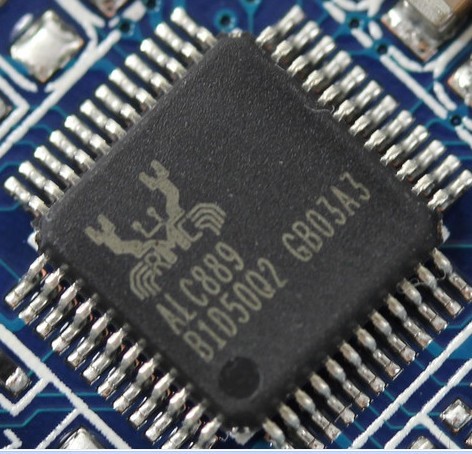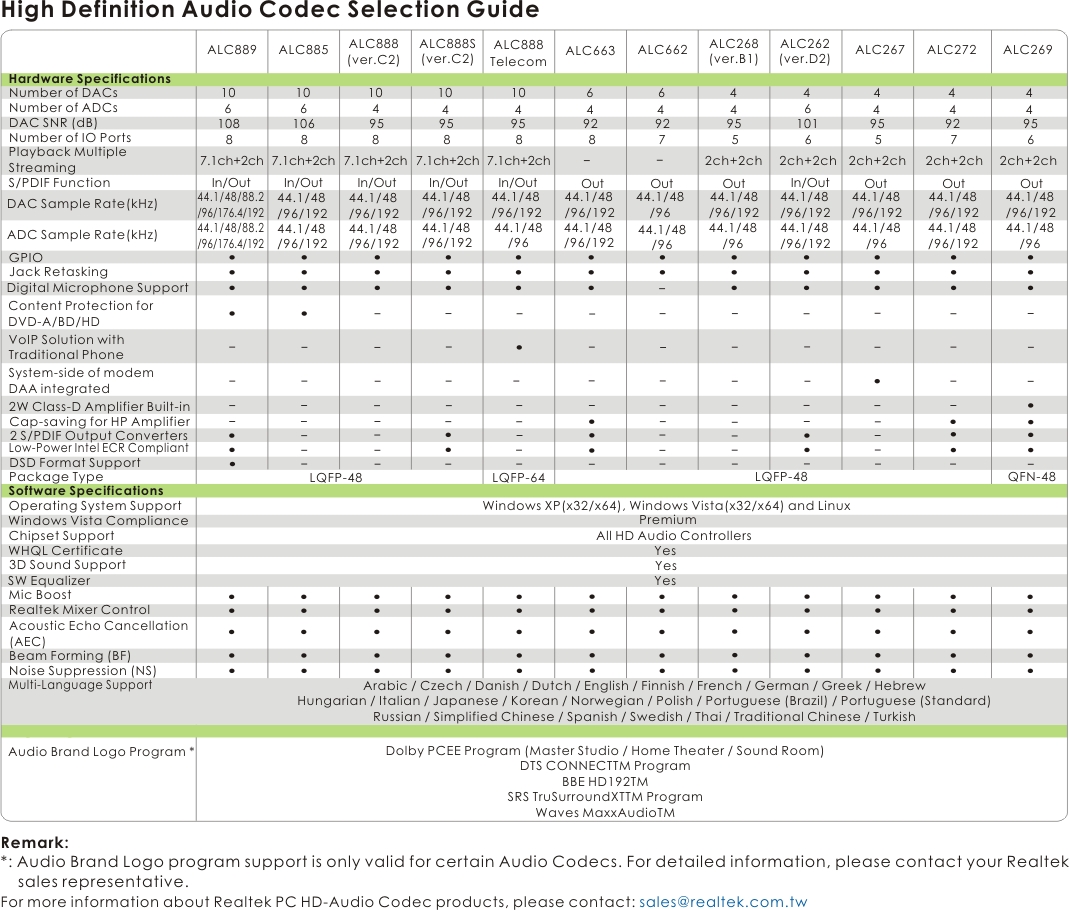What Does It Take To Turn The PC Into A Hi-Fi Audio Platform?
Most hi-fi audio is stored in digital form. With advancements in lossless compression, bit-perfect ripping/streaming, HD audio formats, multi-terabyte storage, and PC-friendly DACs, has the PC earned a place among high-end audio gear? At what price point?
Realtek ALC889
In addition to its work in the networking space, Realtek has a significant share of the integrated audio market, too. The company sells a variety of codecs with different feature sets. The Rampage III Formula motherboard I'm using comes equipped with an ALC889, so that's the multi-channel codec I'm testing alongside the discrete solutions.
Except for the very similar ALC898 and technically better ALC1150, neither of which is listed in the table below, Realtek's ALC889 is pretty much top-of-the-line. Beyond sporting the most advanced specifications, it's also Realtek's only codec with support for DSD (though we couldn't find a suitable ASIO driver to get it working with foobar2000).
You can purchase the ALC889 in volume as an OEM for an indicative price of ~$2 per chip (or less, depending on the volume ordered), which means that the cost it adds to your motherboard is probably less than $10. Talk about an indicator of how commoditized the integrated audio market is.
Before you lean on integrated audio, be sure to do a little research into the codec your motherboard includes. Specifically, higher-sounding part numbers aren't always indicative of a better component. For example, the popular ALC892's specifications are inferior to the ALC889.
According to its datasheet, the ALC889 sports headphone amplifiers integrated at six output ports. They drive the Sennheiser HD 800s at 93.6 dB(A), and as such have more than enough power for anything at or below 300 Ω.
As you'll see, the ALC889 appears to be the least hi-fi of the devices we're testing, with a 1.4 dB(A) difference at 100 Hz. It is quite easily distinguishable in a pure-tone comparison at that frequency, although it is much harder to detect in regular music-listening scenarios (as at 1 kHz and 10 kHz the volume difference is much smaller).
We also want to explore this codec's output impedance. At 77 Ω for the recommended implementation, it is by far the highest (almost by an order of magnitude over the second-highest) in our round-up. Is that a factor in the real world?
Get Tom's Hardware's best news and in-depth reviews, straight to your inbox.
Current page: Realtek ALC889
Prev Page Asus Xonar Essence STX Next Page Test Setup: Sennheiser HD 800 And AKG K 550 Headphones-
SuckRaven Bravo ! Awesome, and a very thorough review. Even though as you mention, audio gear is not usually the forté/emphasis of the reviews here, it's refreshing to have someone at least try to cut through the (more often-than-not) overpriced arena of bullshit that is the field of "high-end" audio. I applaud the review, and the effort. Keep up the good work. More please.Reply -
PudgyChicken Just wondering, why not test a Creative X-Fi Titanium HD or something like that alongside the ASUS Xonar? It would be interesting to see some of the differences between different PCIe sound cards in this matchup. However I understand that what you were really going for was showing the difference between price point and form factor at the same time, so perhaps not testing two PCIe cards makes sense.Reply -
kitsunestarwind The biggest thing I have found for the PC is no matter how good your DAC is , if your speakers and AMP are crap, then it will never sound better.People spend big money on DAC's and forget that you need a high Quality amp with very very low THD (total harmonic distortions) and a very good set of Full Range speakers with high sensitivity if you want good sound, instead of crappy (albeit expensive) computer speakers especially sets with a sub.Reply -
maestro0428 Wonderful article! I love listening to music and do so mostly at my PCs. I try to set up systems where audio is important in component selection. Although we all love drooling over expensive equipment, many times it is not all that necessary for an amazing experience. I'd love to see more! Including smaller, studio speakers as I believe that speakers/headphones are the most important part of the equation. Keep up the great work!Reply -
Someone Somewhere Agree totally with this. It always annoys me when people say they're spending over $100 on a sound card, especially when it turns out that they're using Optical out, and the whole thing is basically moot.I now have a nice source to link to.Reply -
1zacster The thing is you can't just pick up two sets of good headphones, try them on different DACs/AMPs and expect to hear major differences, it takes longer than 5 minutes for your ears to adjust to newer headphones and for the differences to actually show. This is like taking food from Left Bank and then bringing in a bunch of hobos and asking them tel tell the differences between the foods.Reply -
dogman-x I use an optical cable from my PC to a home theatre receiver. With this setup, stereo CD audio content is sent as raw PCM to the receiver, not compressed into DD or DTS. These days you can buy a very good quality home theatre receiver for less than $200. Audio quality is outstanding.Reply -
Memnarchon I would love to see ALC1150 in these tests too, since its widely used at most Z87 mobos.Reply

